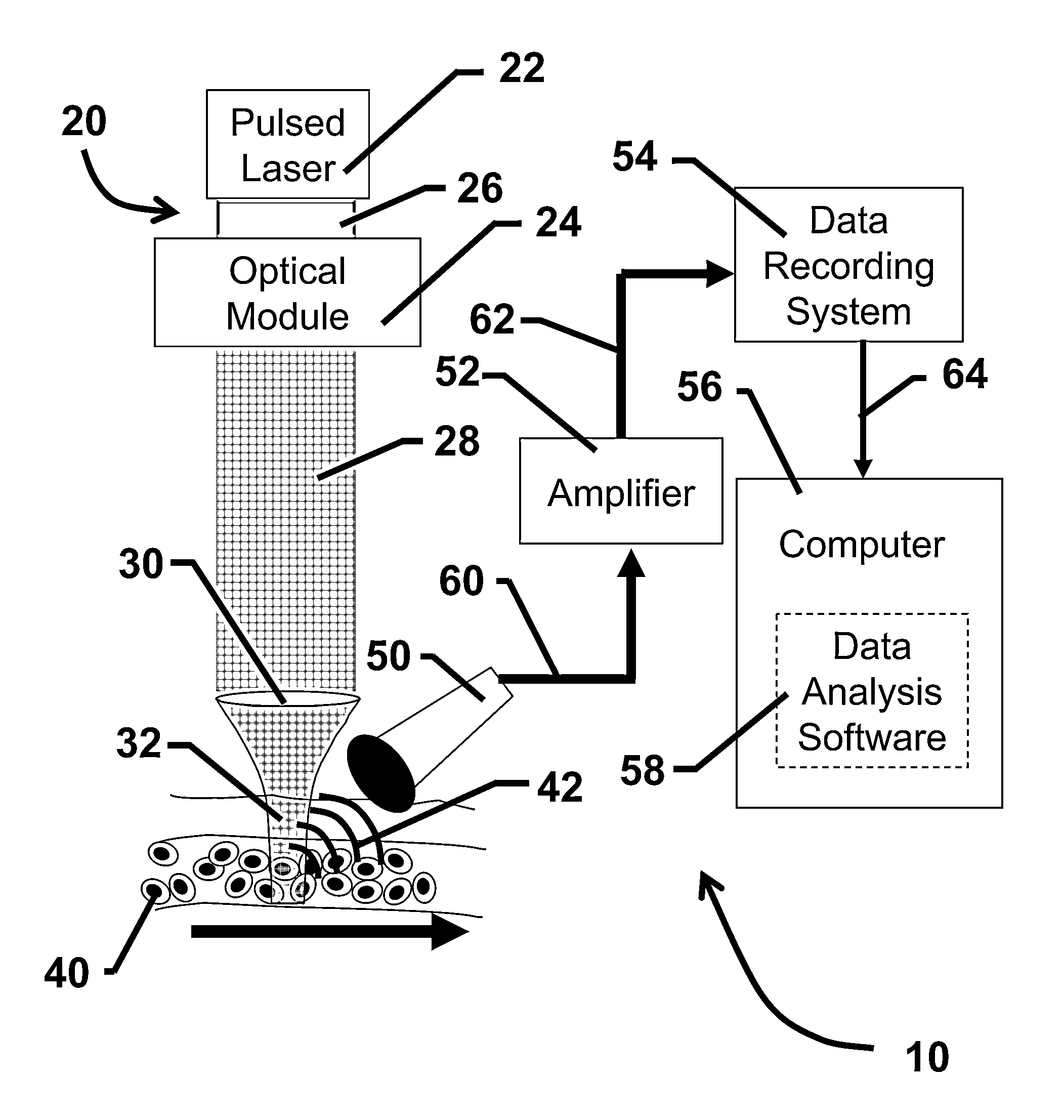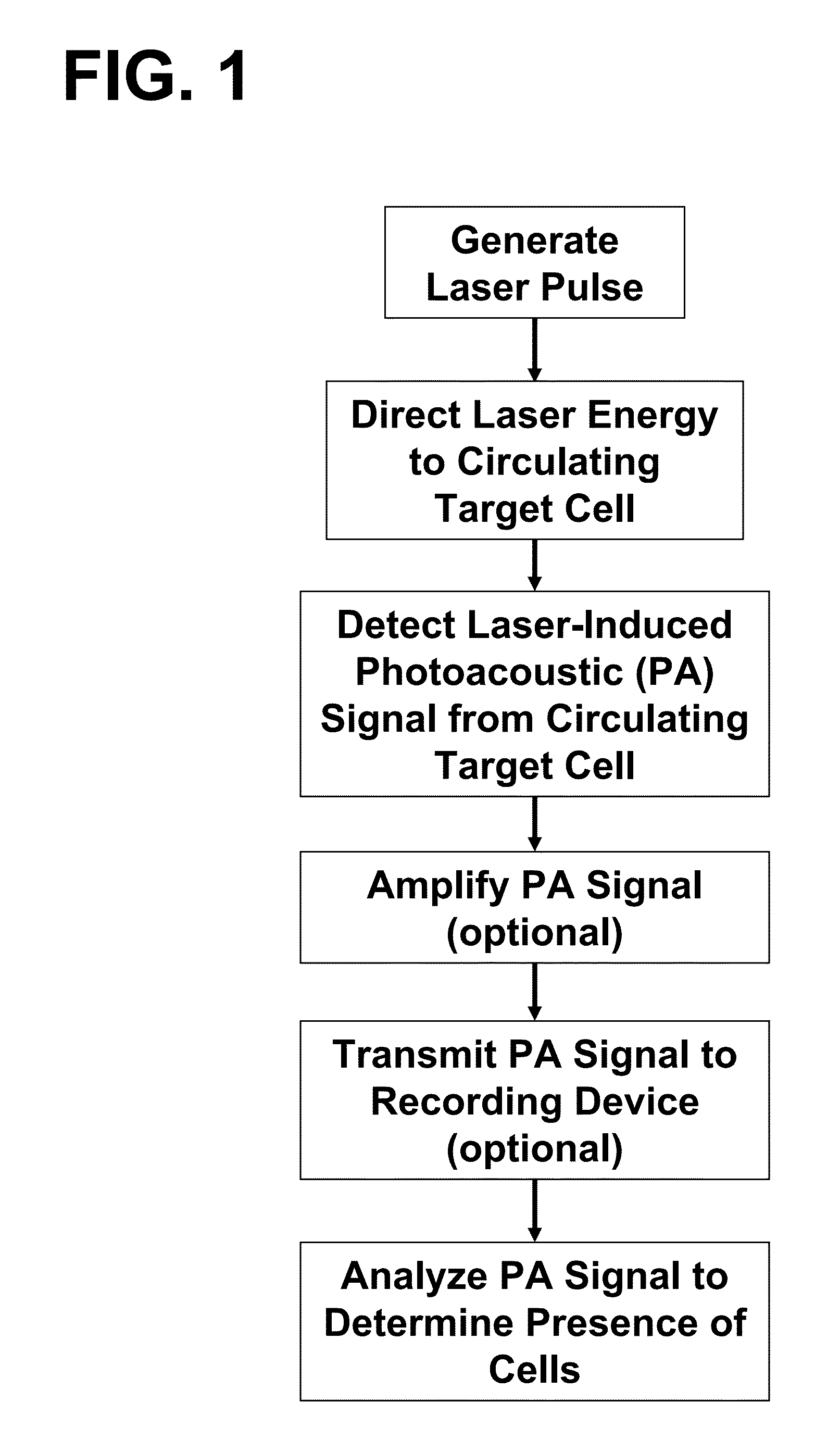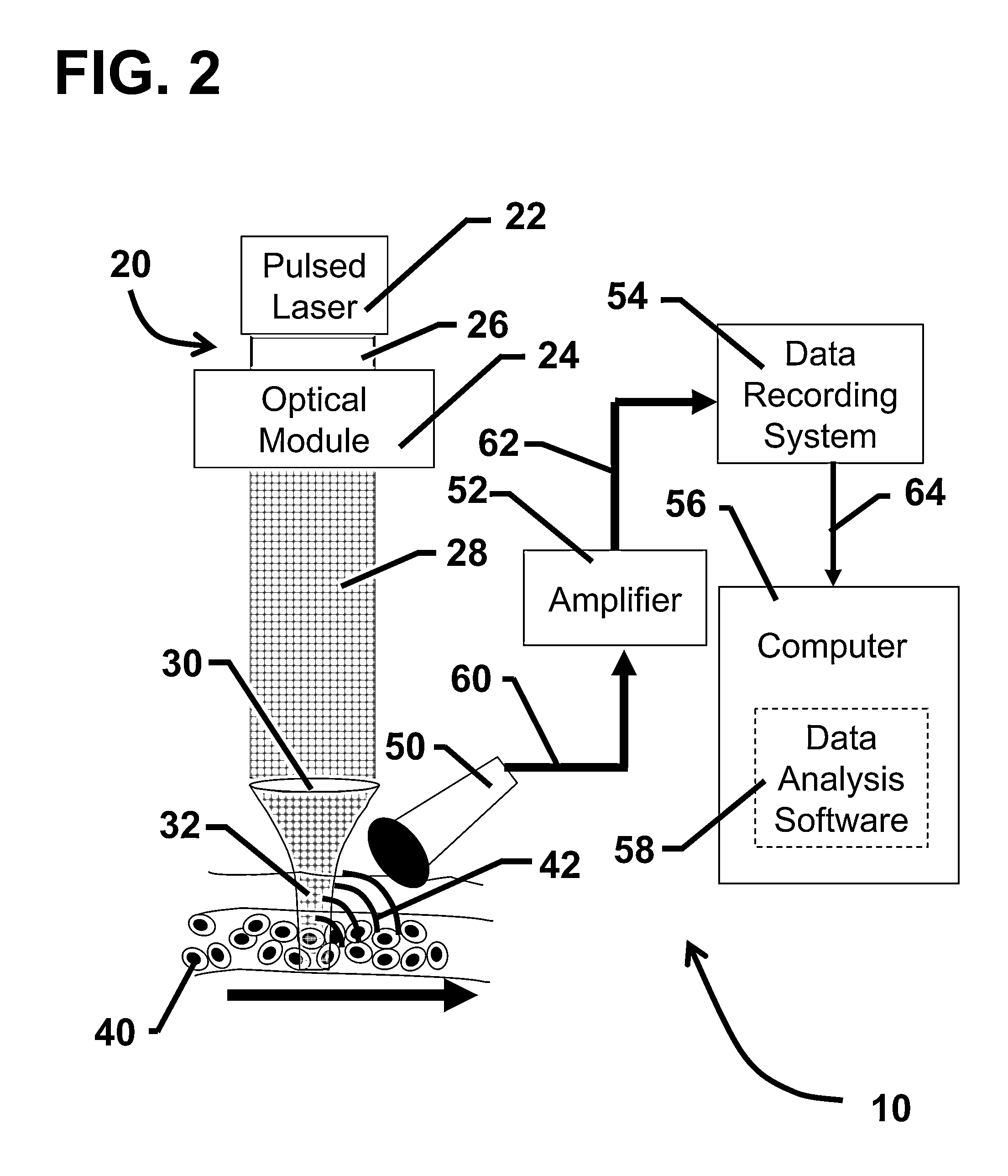Device and method for in vivo flow cytometry using the detection of photoacoustic waves
a flow cytometry and photoacoustic wave technology, applied in the field of in vivo flow cytometry using the detection of photoacoustic waves, can solve the problems of ineffective detection of rare metastatic cells or other antigens, unpredictable artifacts, and traditional flow cytometry techniques that are not suitable for applications such as early diagnosis, prevention and treatment,
- Summary
- Abstract
- Description
- Claims
- Application Information
AI Technical Summary
Benefits of technology
Problems solved by technology
Method used
Image
Examples
example 1
In Vitro Photothermal (PT) Imaging was Used to Determine the Effect of Laser Energy Levels on Laser-Induced Cell Damage to Blood Cells and Subsequent Cell Viability
[0101]To determine whether the laser pulses using in in vivo flow cytometry caused any significant damage to cells or tissues of the organism, the following experiment was conducted. The laser-induced damage threshold of single cells was evaluated as a function of the pumped-laser energy levels at a range of wavelengths using established methods (Zharov and Lapotko 2005, Lapotko and Zharov 2005). In vitro measurements of specific changes in photothermal (PT) images and PT responses from individual cells were used to determine cell damage. During the PT imaging, individual cells were illuminated with a pulse of laser light at a specified energy level and wavelength. After absorbing the energy of the laser pulse, the short-term temperature of the cell increased by as much as 5° C. The laser-induced temperature-dependent ref...
example 2
Prototype In Vivo Photoacoustic Flow Cytometry System Used to Detect Contrast Dye Circulating in Mice
[0106]The following experiment was conducted to demonstrate the feasibility of in vivo photoacoustic flow cytometry (PAFC) for real-time, quantitative monitoring in the blood circulation of a conventional contrast agent, Lymphazurin. In this experiment, a prototype PAFC system was used to detect Lymphazurin circulating in the blood vessels of a mouse ear.
[0107]The prototype PAFC system was built on the platform of an Olympus BX51 microscope (Olympus America, Inc.) and a tunable optical parametric oscillator (OPO) pumped by a Nd:YAG laser (Lotis Ltd., Minsk, Belarus). The general layout of the PAFC system is shown in FIG. 2. Laser pulses had an 8 ns pulse width, a regular repetition rate of 10 Hz with the ability to provide short-term pulses at 50 Hz, and a wavelength in the range of 420-2,300 nm. Laser energy was directed to the blood vessels using a conventional lens, or an optical ...
example 3
Prototype In Vivo Photoacoustic Flow Cytometry System Used to Detect Nanoparticles Circulating in Rats
[0116]To demonstrate the sensitivity of a prototype in vivo photoacoustic flow cytometry (PAFC) system described in Example 2 an experiment was conducted using the prototype PAFC system to detect nanoparticles intravenously injected into the tail veins of rats.
[0117]The in vivo measurements in this experiment were performed using the rat mesentery model. The rat (White Fisher, F344) was anesthetized using ketamine / xylazine at a dosage of 60 / 15 mg / kg, and the mesentery was exposed and placed on a heated microscope stage, and bathed in Ringer's solution at a temperature of 37° C. and a pH of 7.4. The mesentery consisted of transparent connective tissue of 7-15 μm thickness, and a single layer of blood and lymph microvessels.
[0118]The nanoparticles used in this experiment were gold nanorods (GNR), obtained from the Laboratory of Nanoscale Biosensors at the Institute of Biochemistry and...
PUM
 Login to View More
Login to View More Abstract
Description
Claims
Application Information
 Login to View More
Login to View More - R&D
- Intellectual Property
- Life Sciences
- Materials
- Tech Scout
- Unparalleled Data Quality
- Higher Quality Content
- 60% Fewer Hallucinations
Browse by: Latest US Patents, China's latest patents, Technical Efficacy Thesaurus, Application Domain, Technology Topic, Popular Technical Reports.
© 2025 PatSnap. All rights reserved.Legal|Privacy policy|Modern Slavery Act Transparency Statement|Sitemap|About US| Contact US: help@patsnap.com



